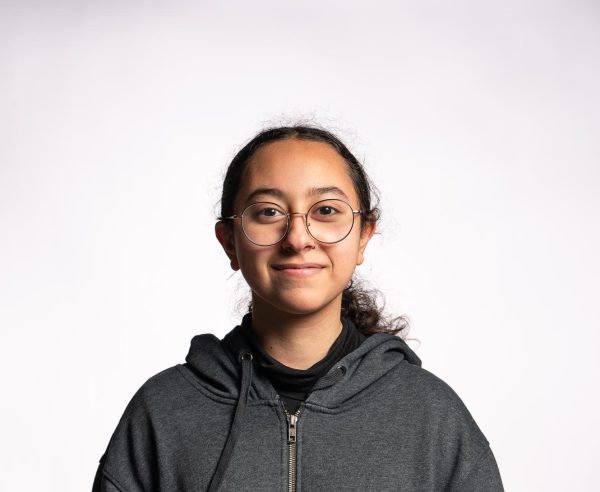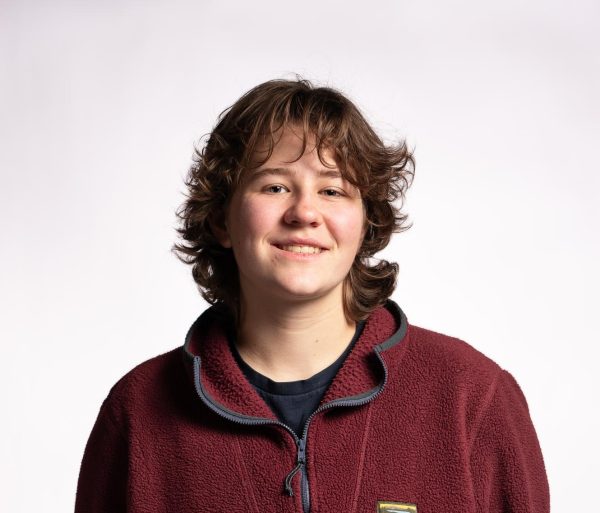Paint drips off a large, thick brush, each droplet hitting the ground softly. Plop. The scene has been constructed with long sheets of crinkled brown craft paper taped to the walls, and hung loosely from the ceiling. Broad, messy strokes of black, blue, yellow, red and white come together to form half-completed images. The floor is littered with brushes, newspaper and broken bits of plaster. A small bottle of white paint sits lonely in the corner amidst the chaos. A group of tourists creep into the makeshift gallery and examine the girl as she layers ink, charcoal and paint to create her piece. Her chocolate brown hair is cut short at the nape of her neck and sits floppily above a set of furrowed brows and squinted eyes full of focus. She pauses for a moment, takes a step back and inspects her work. What next?
This past summer, junior Gray Baker participated in several summer art intensives at the School of the Art Institute in Chicago, the St. Louis Contemporary Art Museum and the Missouri Fine Arts Academy. Through displaying an art installation in Chicago, Baker has just started to dip her toes into the world of professional art.
“I first started seriously considering art as a career path once I hit middle school and realized how much time I wanted to devote to it,” Baker said. “Once I was in eighth grade, I was set on working really hard at this, and paving the path required to do this as a career.”
Baker’s love and background in art started much earlier than middle school. At first, it was a simple hobby and something to do for fun.
A Personal Connection
“When I was in second grade, I had a friend group,” Baker said. “We all had this idea for a story and my spelling was not that good, so I was the [illustrator]. I would do all the pictures for this book we were writing. I was so engrossed in the story, in the characters and designing them. I wanted to show people how I viewed this world. I think that was the start of consciously being aware of how important [art] was to me.”
Since her younger years, Baker’s art style and creative process have changed. As she becomes comfortable with branching out into new themes, Baker has started to experiment more, especially with abstraction.
“She’s so curious about everything,” artist and art teacher Daniel Raedeke said. “[Baker] doesn’t have the filter that a lot of students do where they’re trying to give themselves permission to explore different mediums, ideas or themes.”
Baker has participated in theater, writing, sculpting and fiber art weaving all of these skill sets into her artwork and process.
“I’m just as much a painter as I am a crocheter,” Baker said. “They all influence each other so strongly, and to me, it’s very important that I incorporate all of these aspects into my work.”
Other areas of Baker’s identity also influence the themes Baker expresses in her art. Being young, female and queer has recently led her down the path of exploring gender identity and the construct of womanhood within her work.
“For me, queerness means my experience with the people I love and the way I interact with gender doesn’t align with how I am expected to be, Baker said.” In my home, there were never any expectations on how I was supposed to perform gender or love. Both of my parents were very intentional in creating a radically accepting environment, and I’m thankful for that. I was given the space to explore and interact with what it means to be a girl in a way that has allowed me to be critical of the expectations that [society places on] girls.”
Themes of motherhood, sexualization and domestic labor were the guiding concepts in her Chicago art installation in August, titled “This is not Supposed to be a Representation of my Home.” Her work evokes the irony of how the home, a seemingly comfortable place, can also be a site of abuse for many women. She explored how domestic labor is undervalued because of its association with women. Unlike a typical art display that someone would see in a gallery, people were able to walk in and see Baker as she was making the piece at all of its different stages of completion.
“It honestly felt very vulnerable to be observed and walked around while in the process of creating the piece,” Baker said. “I tried to not look at the people entering or engaging with the space, and to also block out thinking about them as much as I could, but that feeling of being a performer was an intentional part of that.”
Going Pro
The transition from the high school art classroom to having her art on display at galleries is a major step for Baker as she dives into professional art. However, this isn’t without its qualms. Baker is “still figuring out how [she] feels about” parting with her art through a monetary exchange. During the Early College Program at the SAIC, professor Benjamin Pearson taught her about functioning within the art industry. Pearson believes that even in a “professional” setting, the value of art extends beyond its financial value.
“[Through art] you can understand yourself as more expansive,” Pearson said. “You have more interests than you know yet, and you have a say on matters that you might not think you do. The work you make always has appeal to someone else given that you are the product of the society in which you live.”
Another roadblock for aspiring artists is that the general public can hold negative views about the arts that potentially stifle creativity, making a career in art all the more daunting.
“There’s a lot of artists, especially younger ones, who are so scared to be labeled as pretentious,” Baker said. “There is this really common thread of people who aren’t engaged in the art world who think it’s just for money. If you’re a young artist, you’re not making millions of dollars off of that. It’s just for you; it’s just to share. People should not be afraid of expressing pure emotions like that, so I try to not let people who aren’t engaged in art influence the things I create.”
While art may seem to be an unpredictable career to some, it requires the same rigor as a nine-to-five. Pouring one’s heart into an art piece is analogous to the physical labor in a construction job, the education required in STEM jobs.
“[You need] single-mindedness, focus [and] hard work [to succeed in this field],” Raedeke said. “You really have to work. It’s always the artists that work a lot and do it every day. Those are the ones that are going to be most successful. [Gray] is always coming up with ideas, [and] always sketching in her sketchbooks.”
So, with all the societal norms, hundreds of hours of sketching, and somewhat intimate nature of an art career, it can seem unclear why some would choose this route in life instead of keeping it as a hobby. For Baker, it’s all about creating emotional connection.
“For me, art has the ability to take these complicated experiences and feelings, and present them in such a vulnerable way,” Baker said. “You have to see it; you have to listen. When artists are able to be vulnerable with their life experiences, it creates this emotional space that is so hard to replicate. I think to really create change at the emotional level [is] to understand others.”
See Gray Baker’s artwork featured in STL CAM installation

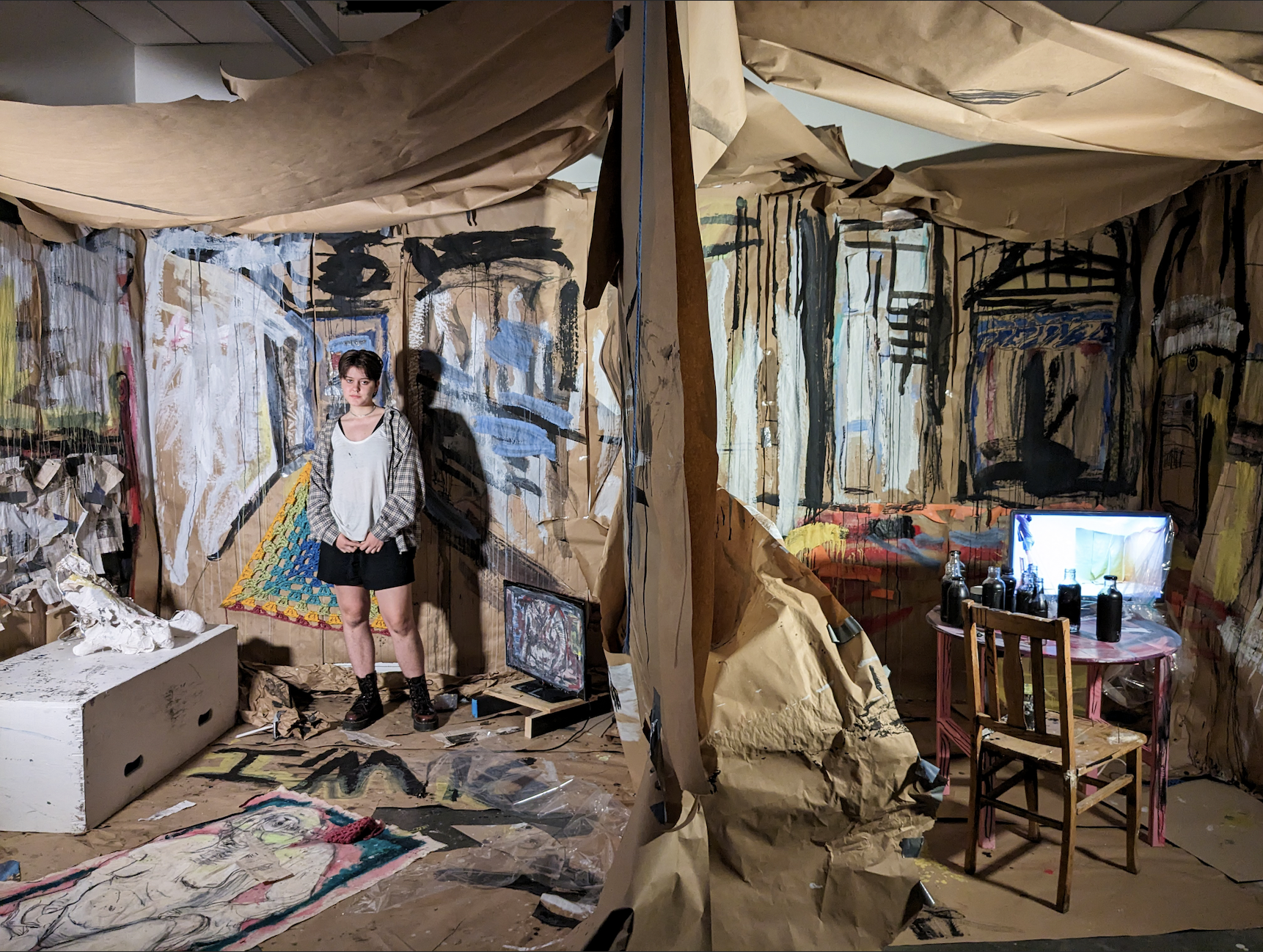
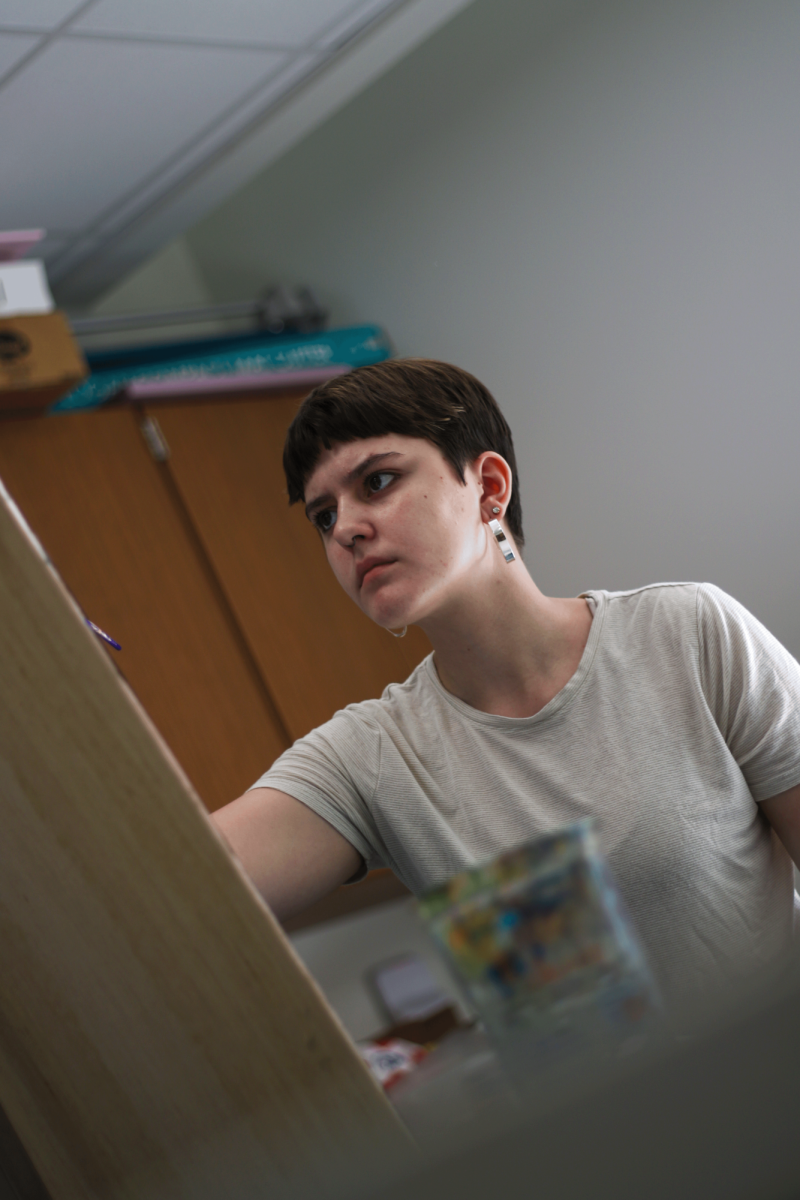
![Junior Yueheng Wangs piece, “Of Mountains and Seas,” is played by Ladue High Schools top orchestra and band classes April 4. He wrote it in June 2023, drawing inspiration from an ancient Chinese novel titled “Classics of Mountains and Seas.” Wang’s parents and compositional teacher sat in the audience to support him throughout the performance. Many of Wang’s friends, who played the piece, also showed their encouragement. “A lot of my friends were really enthusiastic — [especially] the wind players,” Wang said. “A lot of them would come up to me, [would] want me to help them and would come to seminar every day. It was such a group effort, and it felt like a relief that [the piece] was in good hands.”](https://laduepublications.com/wp-content/uploads/2024/02/7K9A1472-1200x801.jpg)
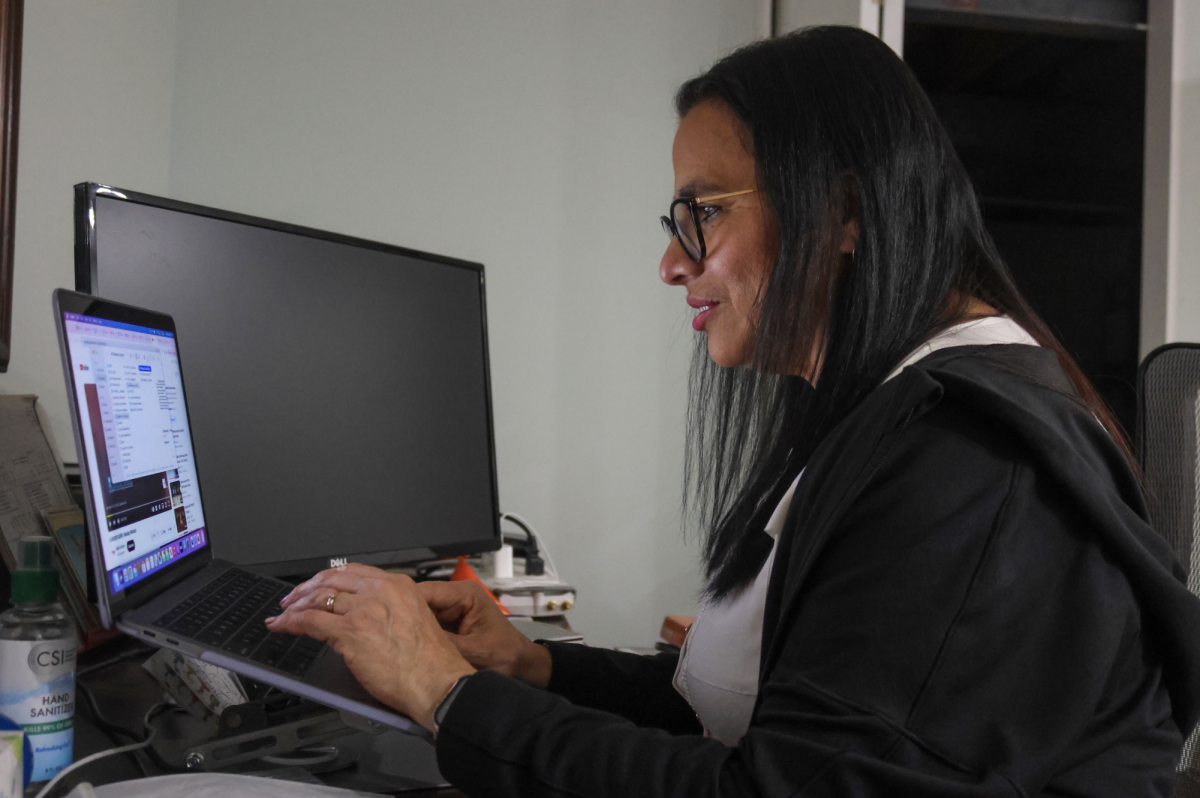
![While writing “I am Fearless,” Fearless wears a handmade bracelet displaying his name, which showcases his appreciation towards his name. During high school, Fearless finally accepted the significance of his name. He felt proud and appreciative to have such a memorable name. “My parents gave me a solid, unique name that is an adjective and you can [find] my name in the dictionary,” Fearless said.](https://laduepublications.com/wp-content/uploads/2024/01/writing-fearless-1200x801.jpg)
![Maxwell Crane performs a monologue in “A Few Bits of Advice.” Behind the scenes, Crane worked tirelessly to create an entertaining script, which called for him to act in each segment of the video. Serving as the writer and director, acting was just another hat he got to wear during the pilots production. “Hes very passionate about what he wants to do and he has a clear vision of the projects that he wants to produce,” Davidson said. “Based on all the things that hes done [from] elementary school to [high school], hes a very driven young man.”](https://laduepublications.com/wp-content/uploads/2024/01/Screen-Shot-2023-11-30-at-12.11.12-PM-1200x607.png)
![Senior Gabe Bernstein works in the school greenhouse. This past summer, Bernstein explored various research opportunities to finally recognize what science fields he would like to pursue. [Research in the summer] helped me narrow down my focus for what I wanted to go into, Bernstein said. I know which sides of plant science and ecological studies I didnt like and which ones I did.](https://laduepublications.com/wp-content/uploads/2023/12/Screen-Shot-2024-01-12-at-5.00.53-PM-1200x802.png)
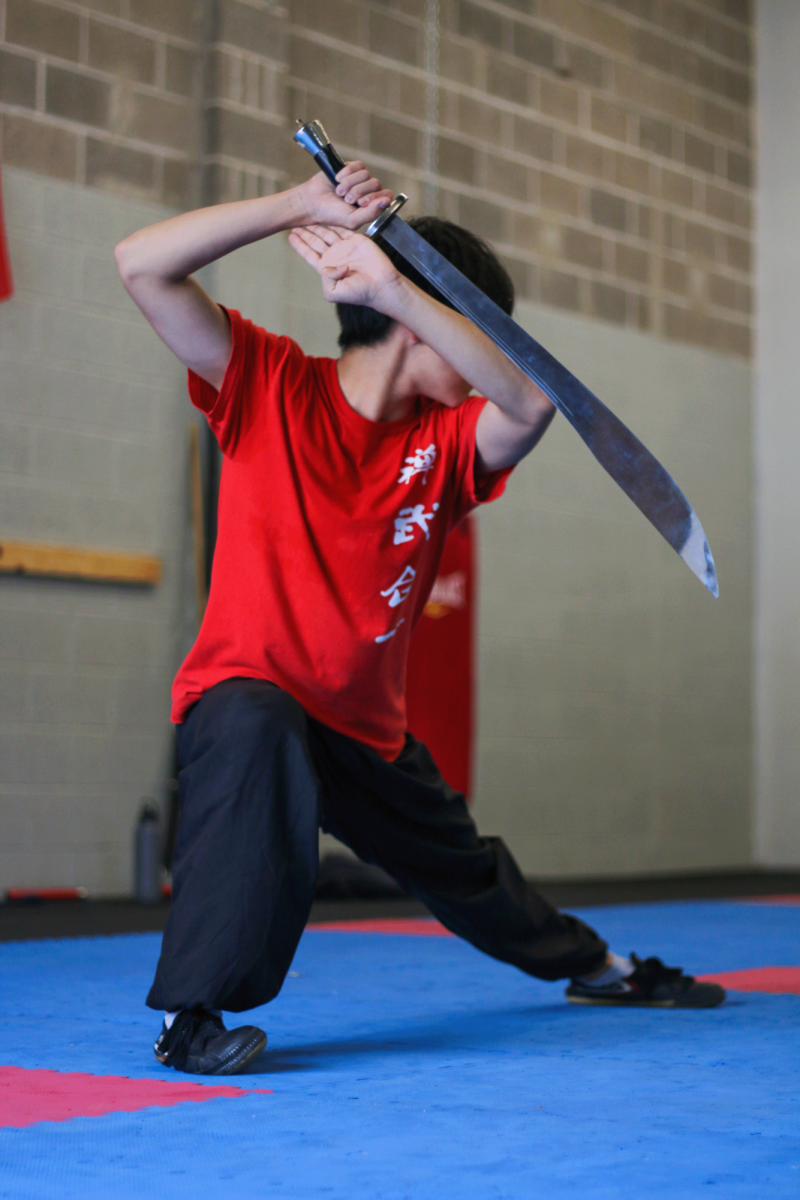
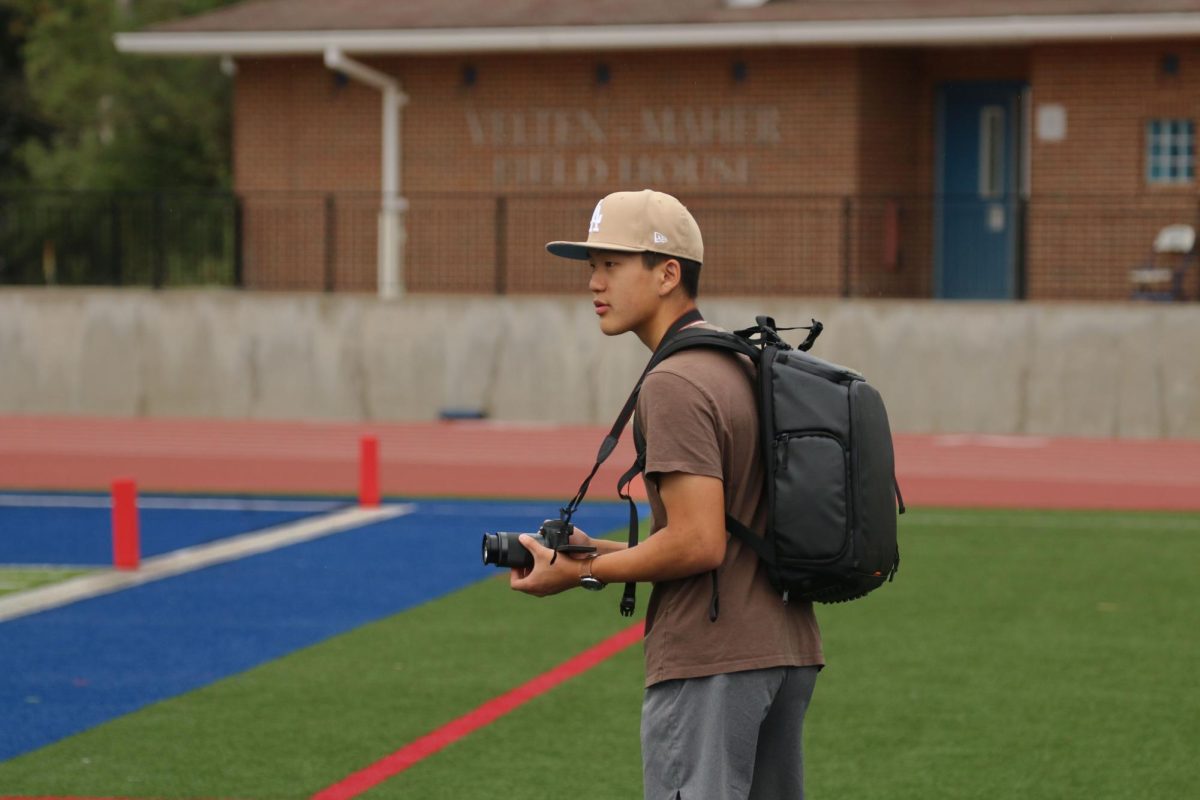
![Sophomore Eva VonAllmen models at a photo shoot to expand her portfolio. Her main projects usually consist of photo shoots with her agency, however her favorite part of being a model is walking runway shows. So far, she has walked several events, including the annual Tribute fashion show and the Fashion Design Show at Washington University in St. Louis. “[Preparing for] runway is a long process, but its really worth it because its always an incredible experience,” Eva said.](https://laduepublications.com/wp-content/uploads/2023/10/EvaVonAllmen2-1-795x1200.jpeg)
